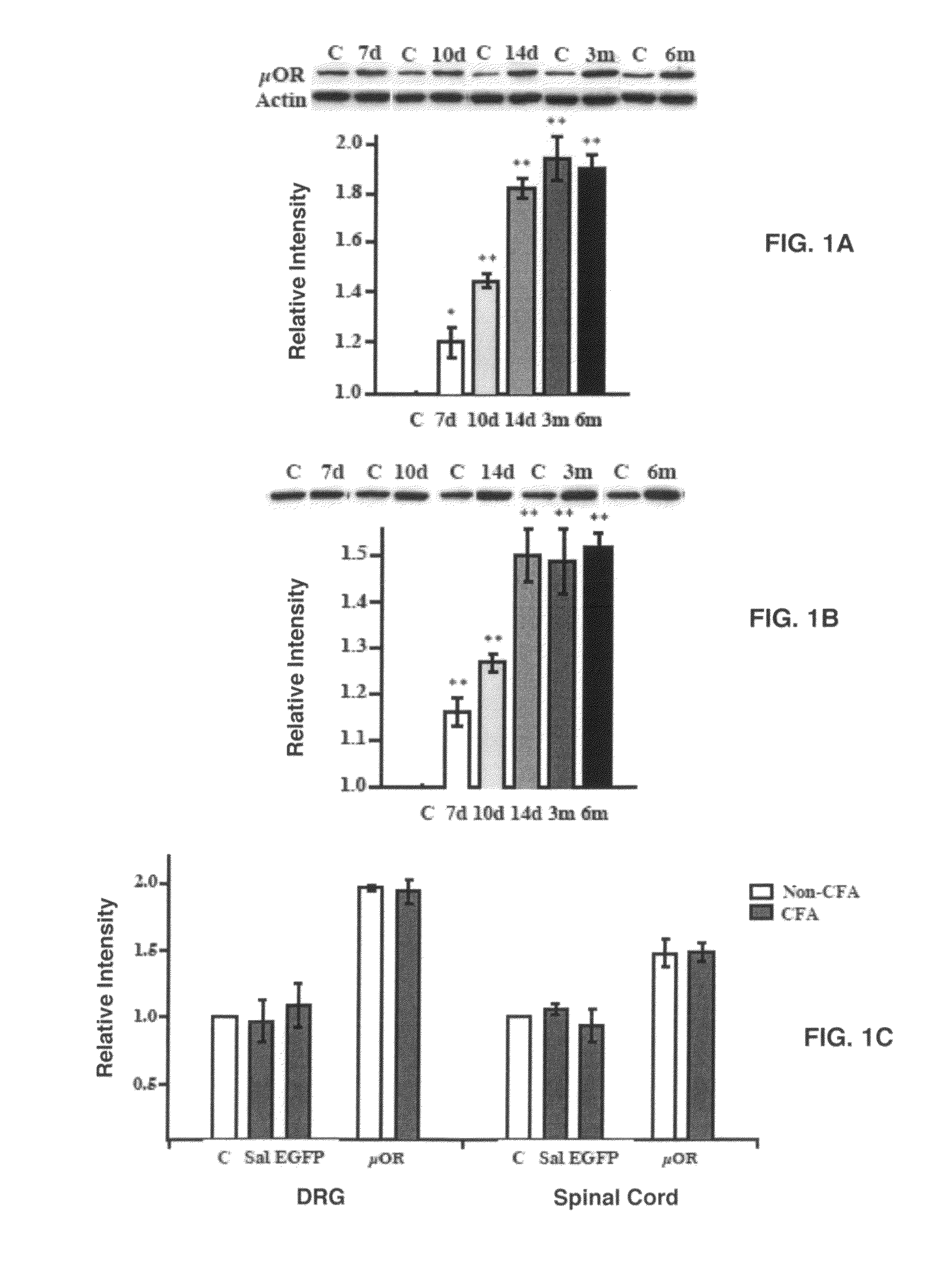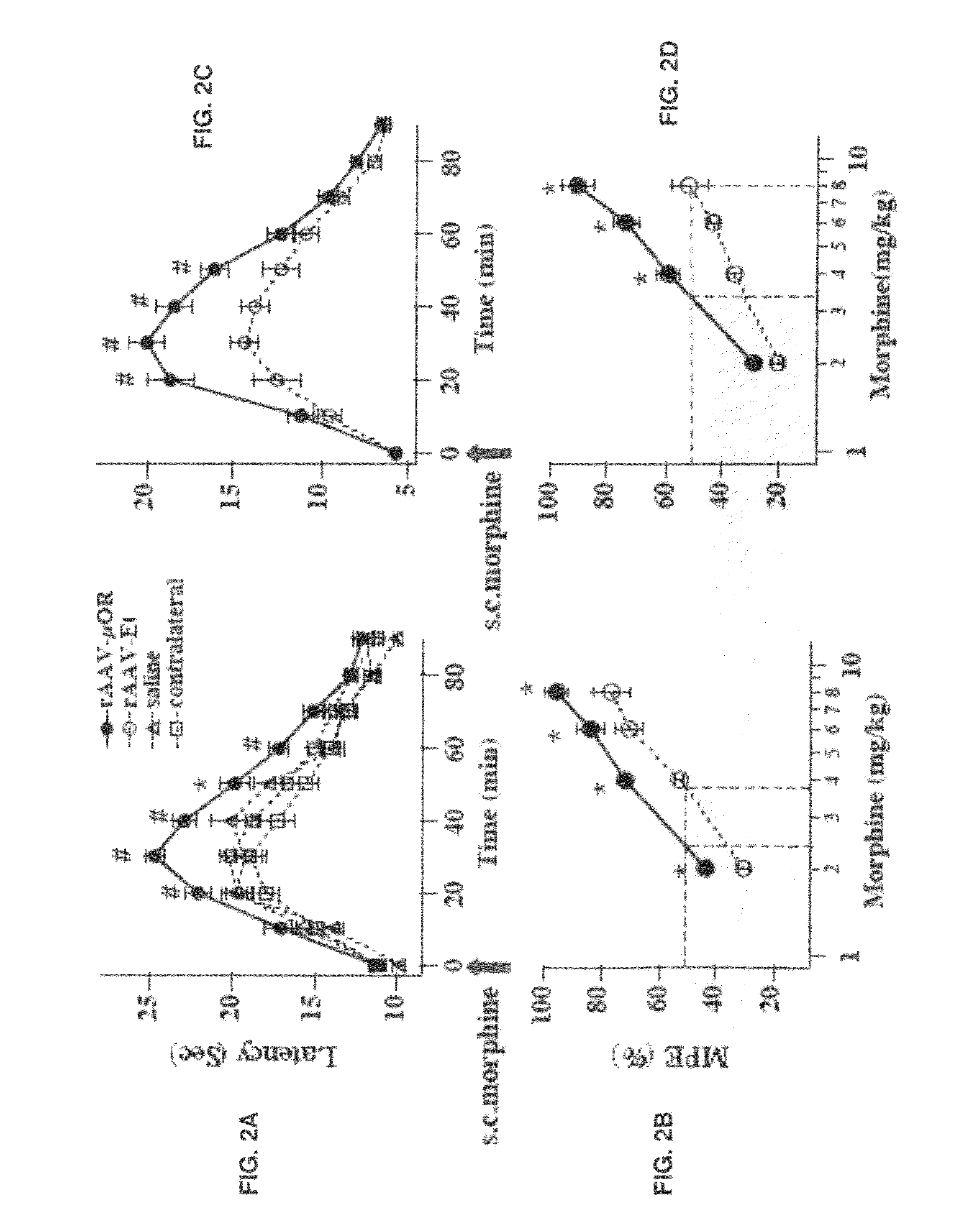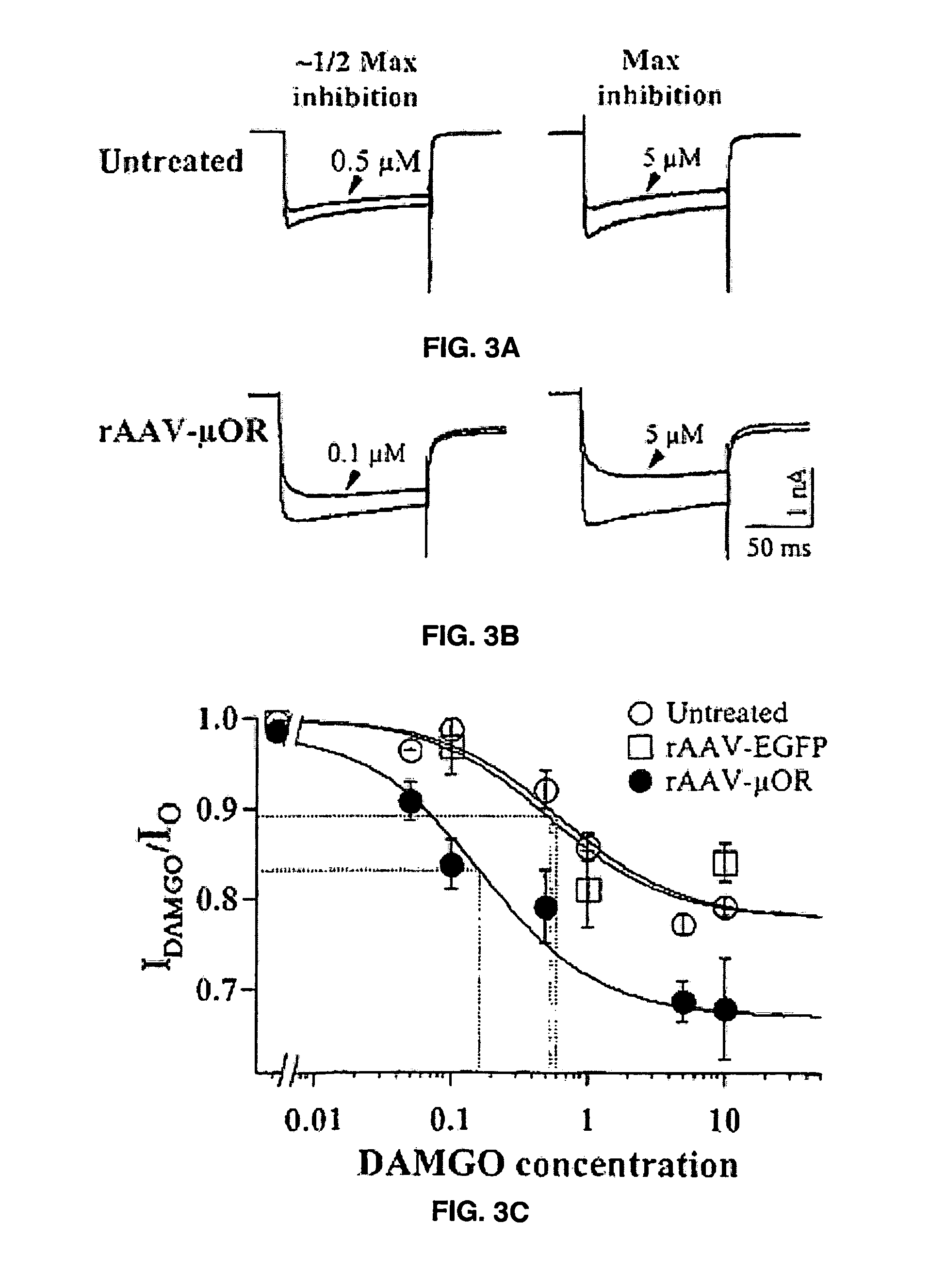Upregulation of opioid receptors for management
a technology of opioid receptors and opioid receptors, applied in the direction of biocide, viruses/bacteriophages, drug compositions, etc., can solve the problems of severely restricting the use of opioid agents, unsatisfactory pharmaceutical agents used for treating chronic pain, and limited success of this approach, so as to increase the levels of opioid receptors
- Summary
- Abstract
- Description
- Claims
- Application Information
AI Technical Summary
Benefits of technology
Problems solved by technology
Method used
Image
Examples
example 1
Transfer of Opioid Receptor Gene to Primary Sensory Neurons Increases Opioid Antinociception—Materials and Methods
Preparation of rAAV Plasmid Constructs and Viral Stocks
[0043]The plasmid pTR-NSE and pTR-NSE-enhanced GFP (EGFP) were prepared as described in Wu et al., (2). The MOR-1 gene-containing plasmid pCMV-μOR, prepared in accordance with Thompson et al (3), was used as the template for PCR amplification to insert a SalI site to the 5′ end and a 6×His peptide sequence followed by a HindIII site to the 3′ end of the μOR gene. The PCR products were digested by SalI and HindIII. The resulting fragment was ligated into the SalI / HindIII sites of pTR-NSE to generate pTR-NSE-μOR. rAAV viral particles were produced in an adenovirus-free system by cotransfecting HEK 293 cells with a rAAV vector plasmid (i.e., pTR-NSE-μOR or pTR-NSE-EGFP), plasmid pXX2, and pXX6 (4). Cells were collected and lysed, and cellular debris was eliminated by centrifugation to gain crude viral solution. The vira...
example 2
Transfer of Opioid Receptor Gene to Primary Sensory Neurons Increases Opioid Antinociception
Stable Enhanced Expression of μORs in DRG Neurons Infected with rAAV Vectors
[0050]Two rAAV vectors were used in this study. One rAAV vector, used in all of the control experiments, was constructed to express the EGFP gene under the control of a NSE promoter. Another rAAV vector was constructed to contain the rat μOR cDNA in place of the EGFP gene. A 6×His sequence was fused to the C terminus of the μOR gene so that the exogenously introduced μORs could be distinguished from the endogenously expressed μORs with an anti-His antibody. The titer of purified virus, determined by transgene expression in DRG cultures by using a serial dilution of the viral stock, was 4.2×108 transducing units (t.u.) / ml for the NSE-EGFP virus (designated as rAAV-EGFP) and 2.6×108 t.u. / ml for the NSE-μOR virus (rAAV-μOR).
[0051]First investigated was μOR expression in cultured DRG neurons treated with rAAV-μOR. The mou...
example 3
Studies into the Efficiencies of Transgene Expression
Preparation of rAAV Plasmid Constructs and Viral Stocks
[0060]rAAV plasmid constructs and viral stocks were prepared as described in Example 1. The titer of purified rAAV-μOR used in this experiment was 2.6×108 transducing units (t.u.) / ml.
Transduction of Cultured DRG Neurons
[0061]DRGs were taken from 13 to 16 day-old rats and desheathed in Hanks's balanced salt solution (HBSS). DRGs were digested in Earle's balanced salt solution (EBSS) with 1 mg / ml trypsin and 1 mg / ml collagenase at 35° C. After one hour, additional culture medium was added to stop enzymatic reaction. The cells were pelleted by centrifugation at 50×g for 6 minutes. The pellet was resuspended in Eagle minimum essential medium (MEM, Life Technologies) and plated on coverslips in a 24-well culture plate. D R G cells were cultured in 1.2×104 cells / well. The cells were incubated at 37° C. with 5% CO2. Twenty-four to forty-eight hrs after plating, DRG cells were transdu...
PUM
| Property | Measurement | Unit |
|---|---|---|
| diameter | aaaaa | aaaaa |
| diameter | aaaaa | aaaaa |
| diameter | aaaaa | aaaaa |
Abstract
Description
Claims
Application Information
 Login to View More
Login to View More - R&D
- Intellectual Property
- Life Sciences
- Materials
- Tech Scout
- Unparalleled Data Quality
- Higher Quality Content
- 60% Fewer Hallucinations
Browse by: Latest US Patents, China's latest patents, Technical Efficacy Thesaurus, Application Domain, Technology Topic, Popular Technical Reports.
© 2025 PatSnap. All rights reserved.Legal|Privacy policy|Modern Slavery Act Transparency Statement|Sitemap|About US| Contact US: help@patsnap.com



